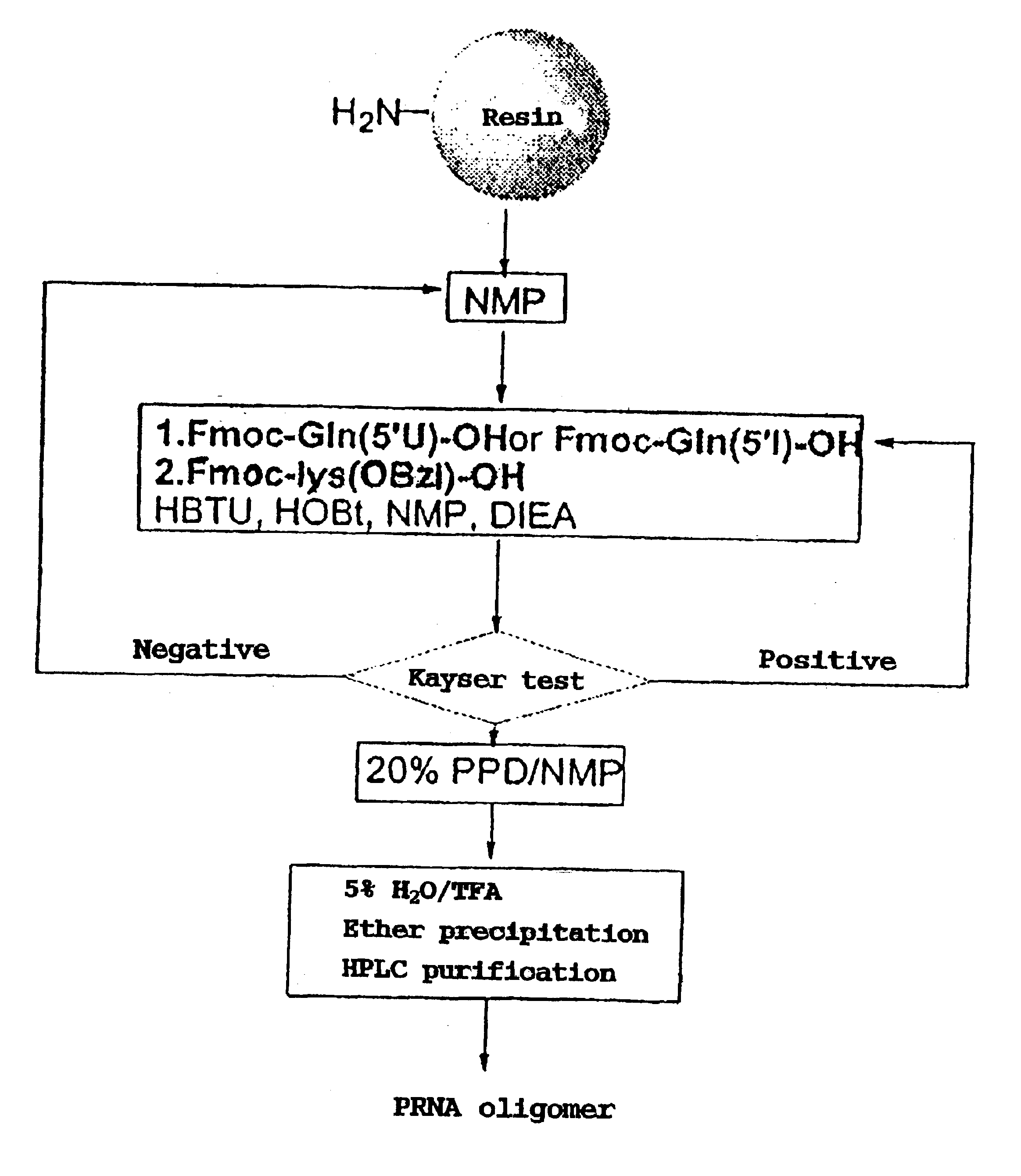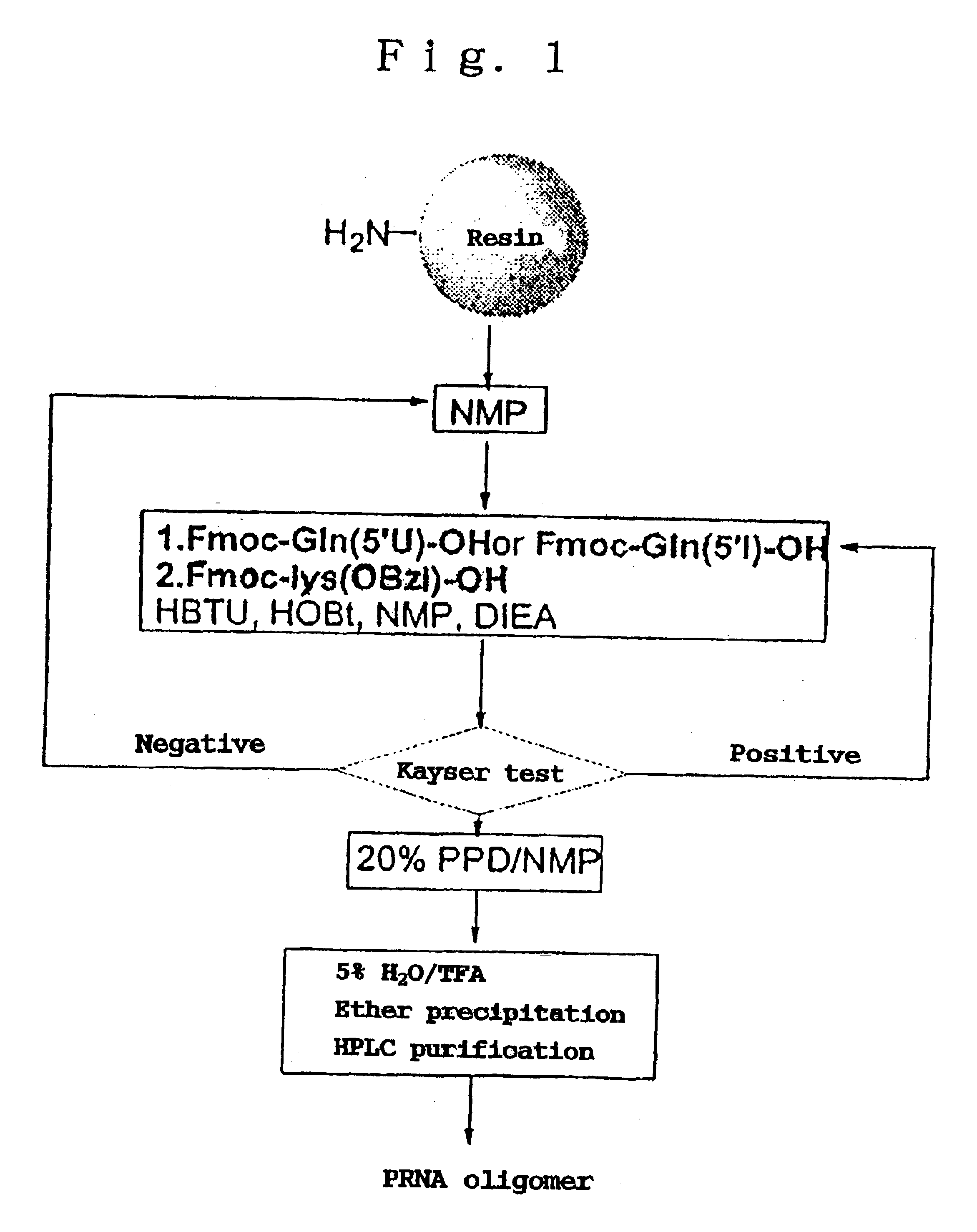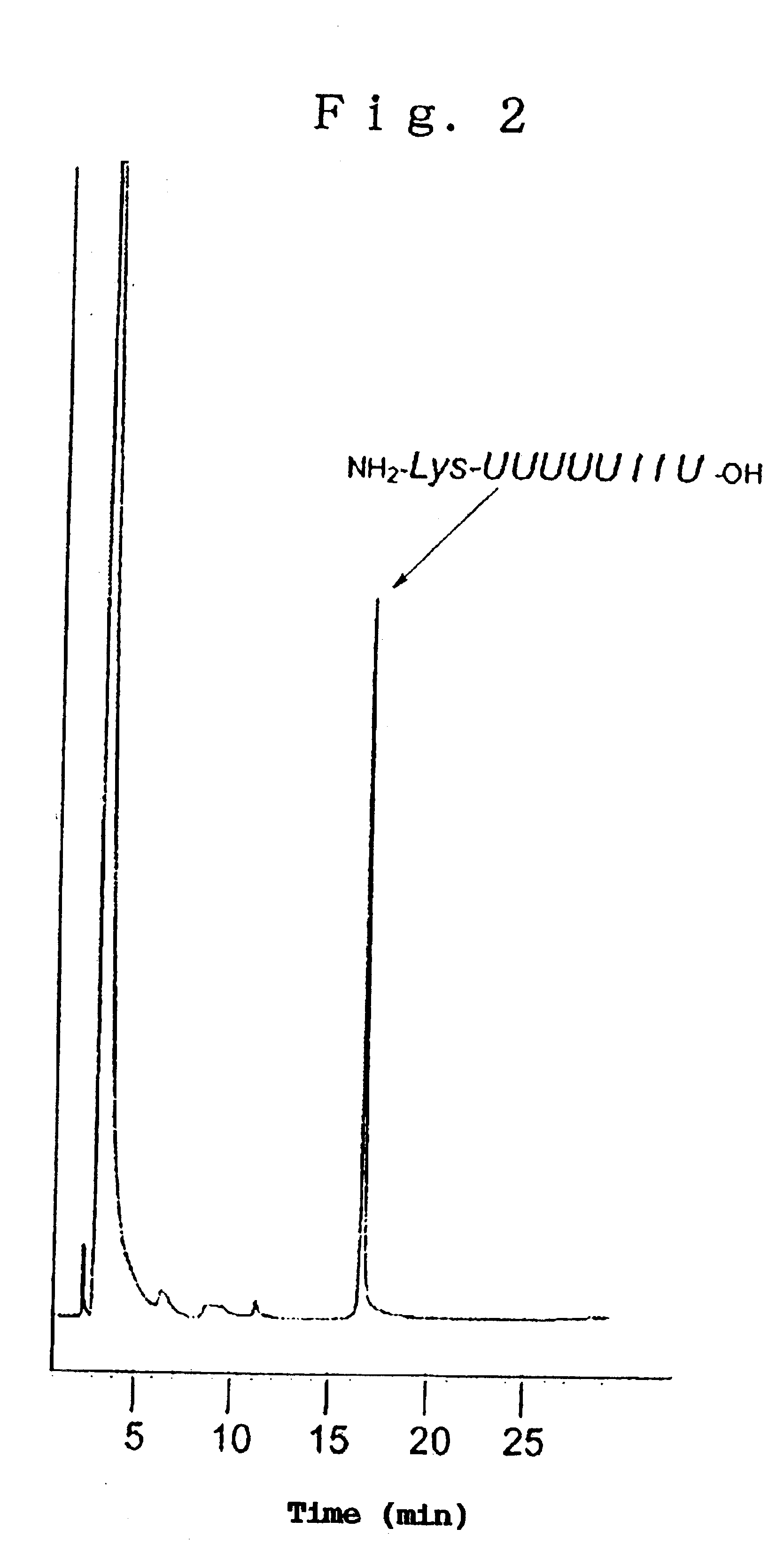Nucleoside derivatives
a technology of derivatives, applied in the field of nucleoside derivatives, can solve the problems of high affinity, disadvantage, and inability to achieve desired results, and achieve the effect of higher affinity for nucleic acid base sequences
- Summary
- Abstract
- Description
- Claims
- Application Information
AI Technical Summary
Benefits of technology
Problems solved by technology
Method used
Image
Examples
reference example 1
Production of 5′-amino-5′-deoxyuridine (5′-NH2-Urd)
(1) Production of 5′-azido-5′-deoxyuridine
Uridine (5.5 g, 22.5 mmol), triphenylphosphine (11.8 g, 45.0 mmol) and lithium azide (5.51 g, 112.6 mmol) were dissolved in dried DMF (120 ml). Then, carbon tetrabromide (14.92 g, 45.0 mmol) was added with vigorous stirring and after 2 hours of stirring, about 5 ml of methanol was added to terminate the reaction. The DMF was distilled off under reduced pressure, and the residue was purified by column chromatography (silica gel; chloroform-methanol (30:1 v / v) to give 5′-azido-5′-deoxyuridine (5.40 g, 21.2 mmol, yield 94%). A white solid.
νmax (Se board) / cm−1: 3370, 2080, 1690, 1270, 1100, 1060 δH (270 MHz; DMS-d6): 3.59(2H, m, 5′-H), 3.92(2H, m, 3′-H, 4′-H), 4.13(1H,q,J2′,1′=J2′,3′=5.0,2′-H), 5.30(1H,d,JOH,3′,5.0,3′-OH), 5.50(1H,d,JOH,2′5.6,2′-OH), 5.67(1H,d,J5,67.9,5-H), 5.77(1H,d,J1′,2′5.6,1′-H), 7.69(1H,d,J6,57.9,6-H), 11.38(1H,s, 3-NH).
(2) Production of 5′-amino-5′-deoxyuridine
To a solutio...
reference example 2
Production of 5′-amino-5′-deoxycytidine (5′-NH2-Cyd)
A suspension of cytidine (9.72 g, 40.0 mmol) in pyridine (200 ml) was added to trimethylchlorosilane (25.6 ml, 200 mmol). After 15 minutes of stirring, benzoyl chloride (23.2 ml, 200 mmol) was added, and the reaction was allowed to proceed at room temperature for 2 hours. The reaction mixture was then cooled on an ice bath, and water (40 ml) was added. Five minutes later, 28% aqueous ammonia (40 ml) was added, and the mixture was stirred at room temperature for 15 minutes. Then, the solvent was distilled off under reduced pressure, and acetone was added to precipitate a white solid. The precipitate was filtered off and recrystallized from water to give N4-benzoylcytidine (13.3 g, 96%). The N4-benzoylcytidine (13.0 g, 37.4 mmol), triphenylphosphine (28.0 g, 107 mmol) and lithium azide (13.0 g, 266 mmol) were suspended in dried DMA, and carbon tetrabromide (35.5 g, 107 mmol) was added to the suspension. After 3 hours of stirring at r...
reference example 3
Production of 5′-amino-5′-deoxyinosine (5′-NH2-Ins)
Inosine (890 mg, 3.0 mmol) was dried under reduced pressure for 1 hour. Thereto was added 1.02 g (21 mmol) of lithium azide, and the mixture was further dried for 1 hour. Distilled DMF (40 ml) was added to the reaction vessel, and the pressure was reduced for about 10 minutes with stirring. Further, 2.20 g (8.4 mmol) of triphenylphosphine was added and, after confirmation of the dissolution of triphenylphosphine, 2.78 g (8.14 mmol) of carbon tetrabromide was added to initiate the reaction. On that occasion, the solution turned yellow. After 8 hours, the completion of the reaction was confirmed by TLC, and the reaction was quenched with methanol. The solution was distilled under reduced pressure, and the residue was purified by silica gel column chromatography (mobile phase MeOH:CHCl3=1:5) to give 5′-azido-5′-deoxyinosine. Isolation yield 775 mg, 88%.
The thus-obtained 5′-azido-5′-deoxyinosine was then dissolved in methanol and reduce...
PUM
| Property | Measurement | Unit |
|---|---|---|
| stability | aaaaa | aaaaa |
| permeability | aaaaa | aaaaa |
| skeletal structure | aaaaa | aaaaa |
Abstract
Description
Claims
Application Information
 Login to View More
Login to View More - R&D
- Intellectual Property
- Life Sciences
- Materials
- Tech Scout
- Unparalleled Data Quality
- Higher Quality Content
- 60% Fewer Hallucinations
Browse by: Latest US Patents, China's latest patents, Technical Efficacy Thesaurus, Application Domain, Technology Topic, Popular Technical Reports.
© 2025 PatSnap. All rights reserved.Legal|Privacy policy|Modern Slavery Act Transparency Statement|Sitemap|About US| Contact US: help@patsnap.com



